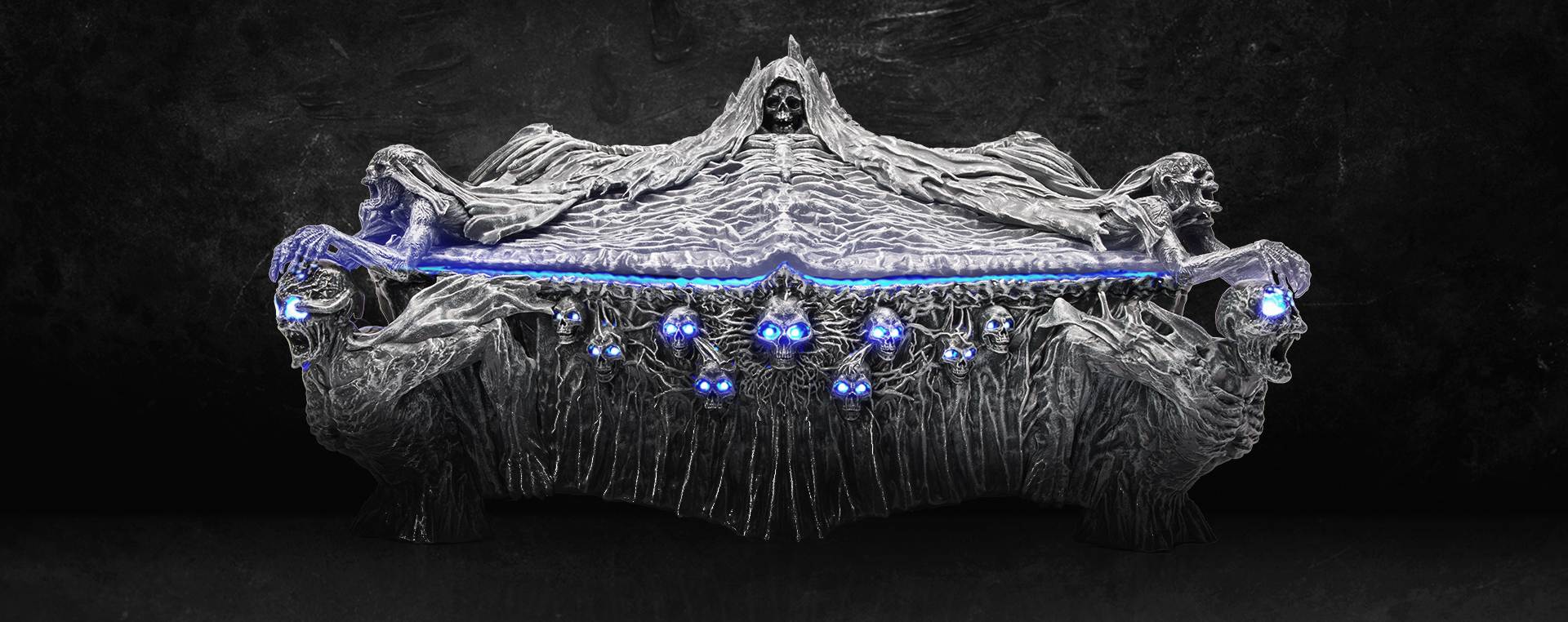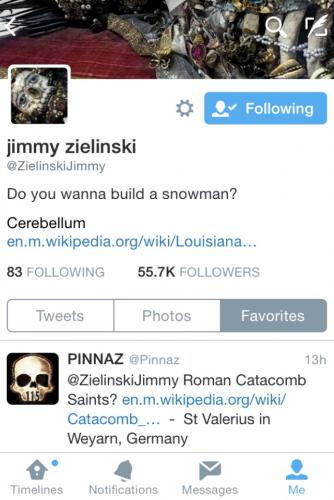So I did a little digging around and found out that Jimmy's Twitter background image is St Valerius who is buried in Weyarn, Germany. The image is taken from a book published in 2013 by ~
Paul Koudounaris - Heavenly Bodies: Cult Treasures and Spectacular Saints from the Catacombs
Death has never looked so beautiful. The fully articulated skeleton of a female saint, dressed in an intricate costume of silk brocade and gold lace, withered fingers glittering with colorful rubies, emeralds, and pearls—this is only one of the specially photographed relics featured in Heavenly Bodies.
In 1578 news came of the discovery in Rome of a labyrinth of underground tombs, which were thought to hold the remains of thousands of early Christian martyrs. Skeletons of these supposed saints were subsequently sent to Catholic churches and religious houses in German-speaking Europe to replace holy relics that had been destroyed in the wake of the Protestant Reformation. The skeletons, known as “the catacomb saints,” were carefully reassembled, richly dressed in fantastic costumes, wigs, crowns, jewels, and armor, and posed in elaborate displays inside churches and shrines as reminders to the faithful of the heavenly treasures that awaited them after death.
Paul Koudounaris gained unprecedented access to religious institutions to reveal these fascinating historical artifacts. Hidden for over a century as Western attitudes toward both the worship of holy relics and death itself changed, some of these ornamented skeletons appear in publication here for the first time.
Extraordinary pictures of the catacomb ‘saints’
In 1578 the remains of thousands of individuals assumed to be early Christian martyrs were discovered in Rome. The remains were given fictitious names and sent to Catholic churches and religious institutions in German-speaking Europe as relics of saints to replace holy relics that had been destroyed during the Protestant Reformation. Reassembled by skilled artisans, encrusted with gold and jewels and richly dressed in fantastic costumes, the skeletons were displayed in elaborate public shrines as reminders of the spiritual treasures that awaited the faithful after death.
For nearly three centuries the skeletons were venerated as protectors of their communities until doubts about their authenticity surfaced in the modern era. They then became a source of embarrassment for the Church and most were destroyed or hidden away. In his new book, Heavenly Bodies, art historian Paul Koudounaris tracked down a number of these skeletons, gaining unprecedented access to photograph them in some of the most secretive religious establishments in Europe.
St Valerius in Weyarn
Maybe it has to do with the Catacombs. But Roman Catacombs?
Catacomb Saints
Jimmy also has this statement/question - Do You Want to Build a Snowman
Maybe he watched the kids movie "Frozen" over the Holidays?






